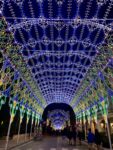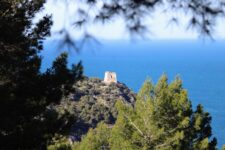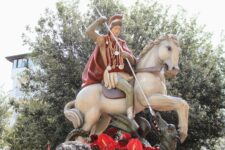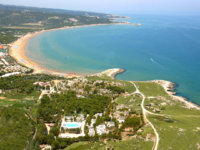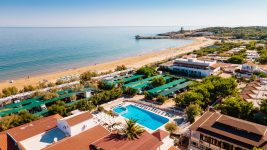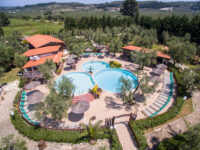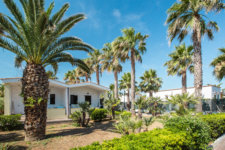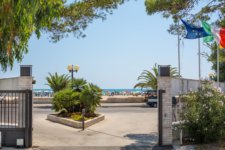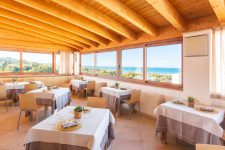The Lighthouse of Vieste, which can be admired from most of the city, stands on the islet of Santa Eufemia (or more precisely Santa Eugenia), located between Punta Santa Croce and Punta San Francesco, closing the bay of Marina Piccola.
Its position is strategic for the navigation routes between the middle and lower Adriatic. It was designed in 1867 and the tower on which the lantern is located is located on the lighthouse operator's old home, which today, thanks to complete automation, is uninhabited. Above the lighthouse tower you can admire a spectacular brass lantern, which lights up every day at dusk and with its beams of light illuminates the town of Vieste. The lighthouse is completely controlled and managed by the Lighthouse Zone Command of the Navy based in Venice.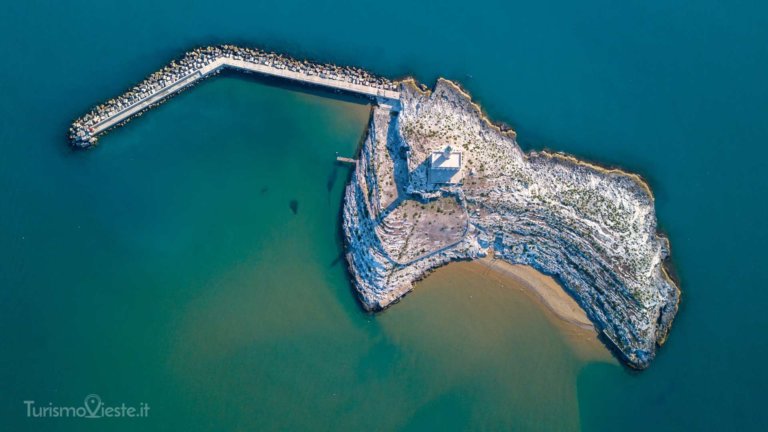
The Cave Sanctuary of Venus Sosandra
On the islet of the Vieste lighthouse there is a cave, studied since 1987: inside at least 200 votive inscriptions in Greek and Latin were found on the walls made by sailors passing through the island, some of which in honor of Venus Sosandra ( goddess of the sea and savior of men) dating from the third century BC to the late Roman period.
These inscriptions, still being studied today, demonstrate how Vieste can be identified as the ancient Uria Garganica (Ύρια in ancient Greek, Hyrium in Latin), an ancient city of the Gargano mentioned by some ancient authors such as Strabone, Ptolemy and Pliny the Elder , where Catullus attests that the cult of Venus Sosandra was widespread.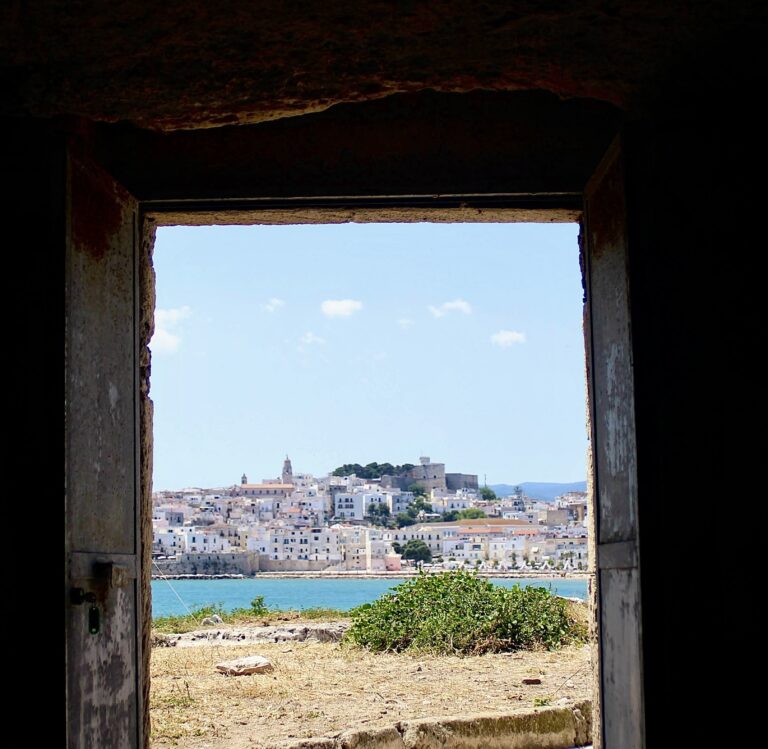
This cult of Athenian origin probably imported from a colony from Cnidus (Turkey) which colonized Corcyra Melaina (Curzola) in the second half of the sixth century. BC, which together with Faros (Hvar) and Issa (Vis) were the beacons of Greek civilization on the eastern Adriatic coast, thanks to the flourishing maritime and commercial routes between Vieste and these areas.
The seafaring vocation of the village has contributed to the natural spread of the cult of this saving divinity, protector of sailors and fishermen. In the following centuries the cave, from a sacred place in honor of a pagan divinity, was transformed for Catholic worship, as evidenced by the medieval inscriptions, rich in Christian symbols.
The cult of Venus Sosandra has many points in common with the cult of the Catholic Maria Stella Maris, protector of sailors. During the celebrations of the Madonna del Mare which are held at the beginning of September, the statue of Stella Maris leaves from the nearby port to reach the islet of the lighthouse of Vieste with a singular procession in the sea involving many boats.
In ancient times sailors during Adriatic navigation stopped in Vieste to refresh themselves on water and food and express their devotion to the saving divinity, who had a place of worship on the islet.
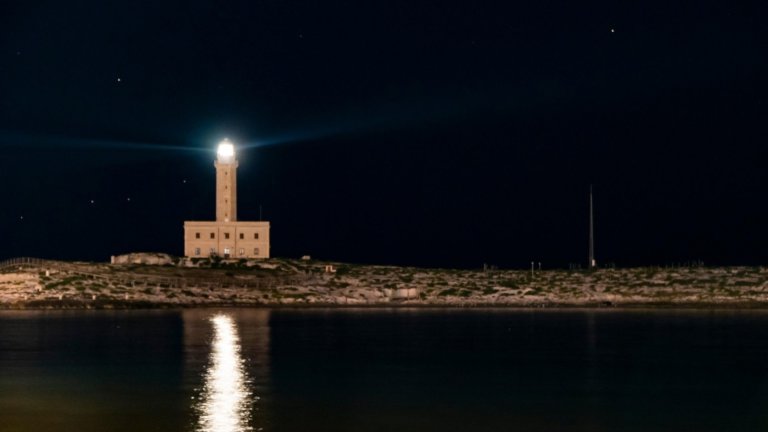 In the same cave there are numerous other inscriptions from more recent times which unfortunately have the more recent ones canceled the older and more important ones. Most of these writings date back to the Middle Ages. One of these dates back to 1002 AD when the Venetian armed fleet led by Doge Pietro Orsoleo II stopped in the port of Vieste during its journey to rescue the city of Bari besieged by the Saracens
In the same cave there are numerous other inscriptions from more recent times which unfortunately have the more recent ones canceled the older and more important ones. Most of these writings date back to the Middle Ages. One of these dates back to 1002 AD when the Venetian armed fleet led by Doge Pietro Orsoleo II stopped in the port of Vieste during its journey to rescue the city of Bari besieged by the Saracens
On that occasion, the following inscription was engraved in the lighthouse cave:
IN N DNI DEI ED SALVATORIS NRI IH XPI ANNO AB INCARNA CIONIS EIUS MIL: MENS: SEPTI: DIE III INDICO': I. INTROVIT IN ISTO PORTO DOM METRO DUX VENETIQUOR.ED DALMATIANOR CULO NAVES C. PREPARATUS AD BELLUNO CONTRA SARRACENOS QUI SEDEBANT SUPRA VARES, ED PUGNVIT CU IL. AL II OCCIDERUNT ALII IN FUGAM MISER.
(In the name of our Lord, God and Savior Jesus Christ, in the year 1003 of his incarnation, in the month of September, on the third day of the first indiction, Mr. Peter, commander of the Venetian and Dalmatian regions entered this port with a hundred ships to fight against the Saracens who were besieging Bari. Many he killed and many others he put to flight.)
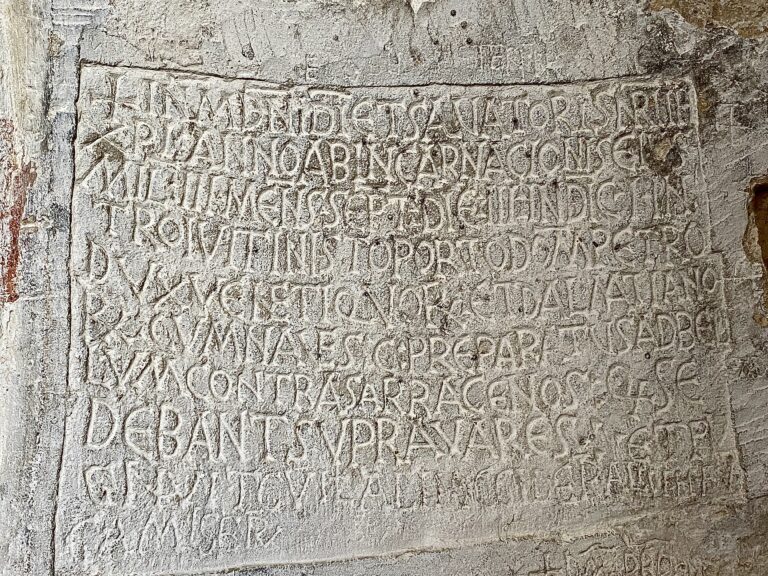
The custom of writing on the walls of the cave on the islet continued until recent times, as evidenced by the inscriptions made by the keepers of the lighthouse of Vieste who used this cave as a warehouse.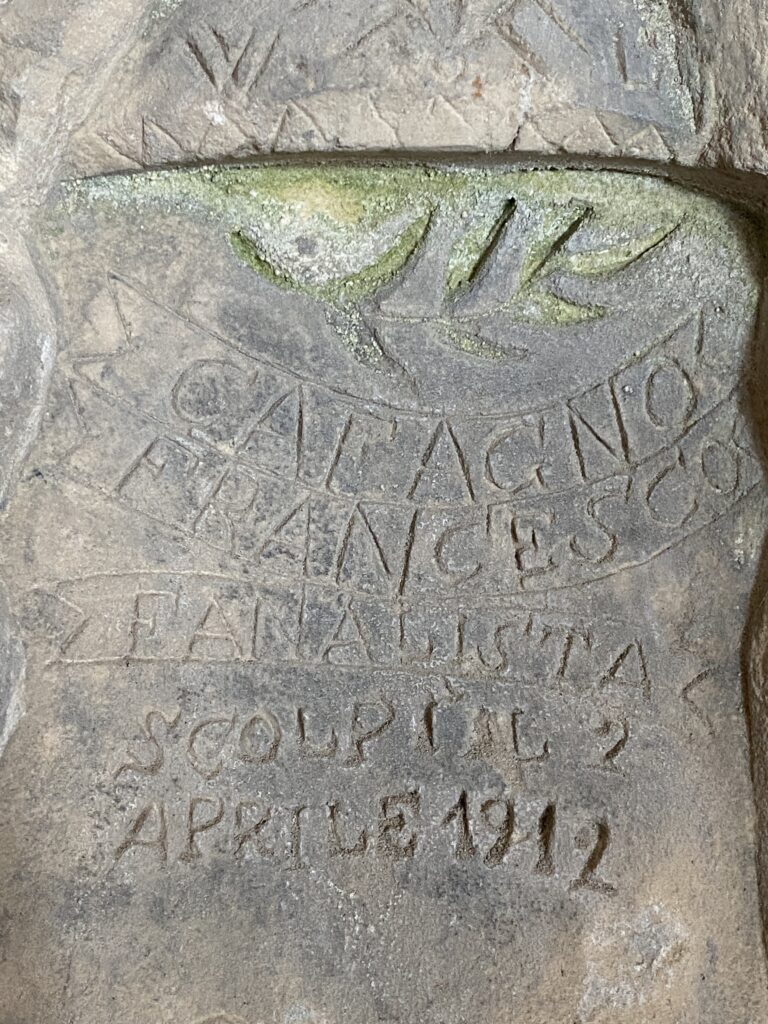
Since 2023, the islet of the lighthouse has been the site of excavations and archaeological studies by the Universities of Bari and Foggia, as evidenced by this interesting video by Lorenzo Scaraggi and Gianfranco Maiullari.
By clicking on play you authorize the use of cookies by youtube.com
Excavations are bringing to light new inscriptions and environments that man and time had hidden. Findings of late ancient burials, remains of farm animals, an ancient source of fresh water and a small quarry of stone blocks for building use suggest the presence of a small human settlement on the islet since very ancient times.
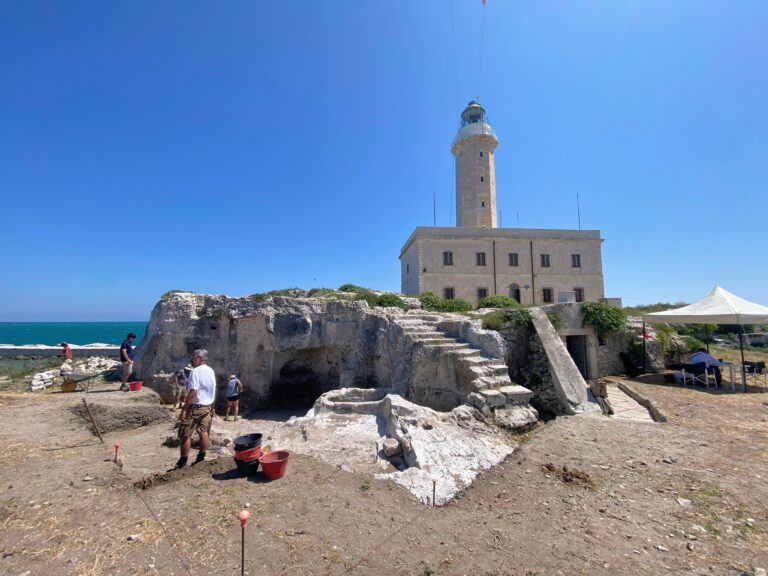
The name of the islet of the lighthouse of Vieste
Michele Delli Santi points out that the islet of the lighthouse is called by the geographer Willem Blaeu in 1630 “S. Egenia” (Santa Eugenia), as well as in all geographical and nautical maps up to the mid-nineteenth century they all show the name Santa Eugenia or Santa Egenia. The name has Greek origins, being the feminine form of the name Eugenio, which derives from the Greek ευγενης (eugenes), composed of ευ (eu, “well”) and γενης (genes, “born) 'well born'. It was probably the Greeks from Arcadia (Peloponnese) who first called it by this name, when the Greek colonists moved to the Gargano, joining the local population and founded the city of Uria Garganica.
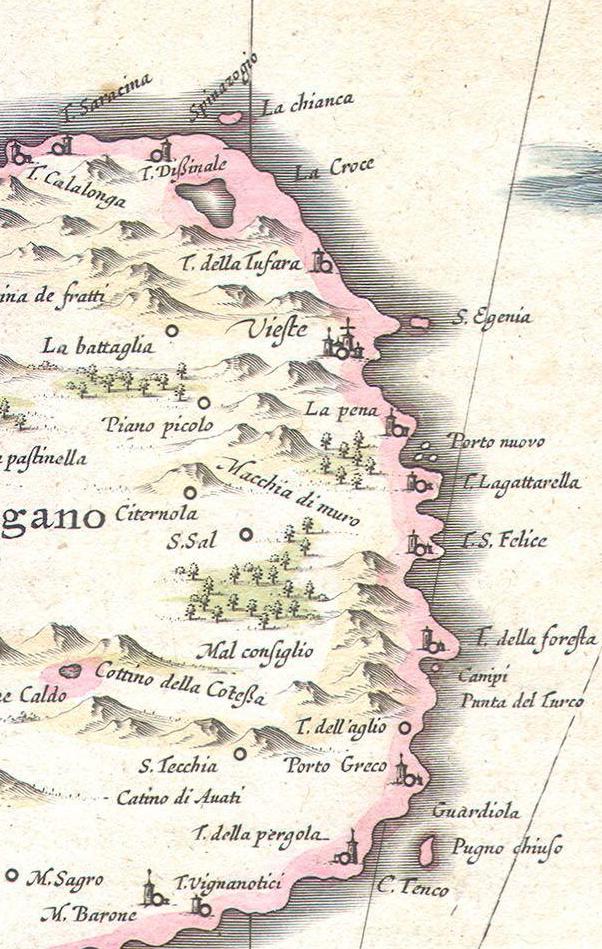

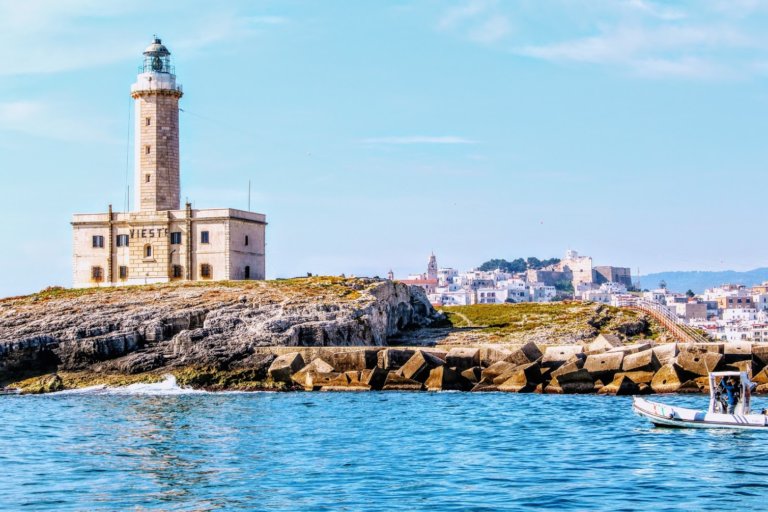

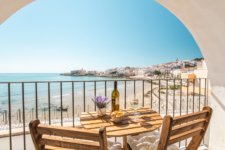
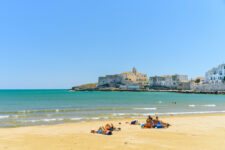

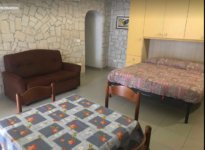
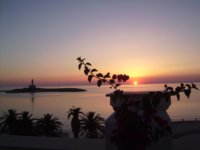





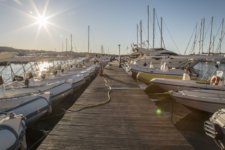

 Turismovieste.it is created by
Turismovieste.it is created by 